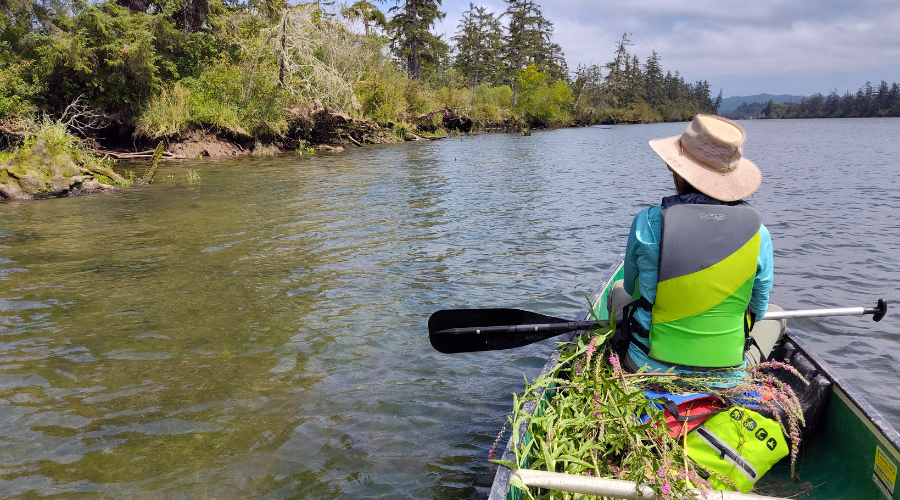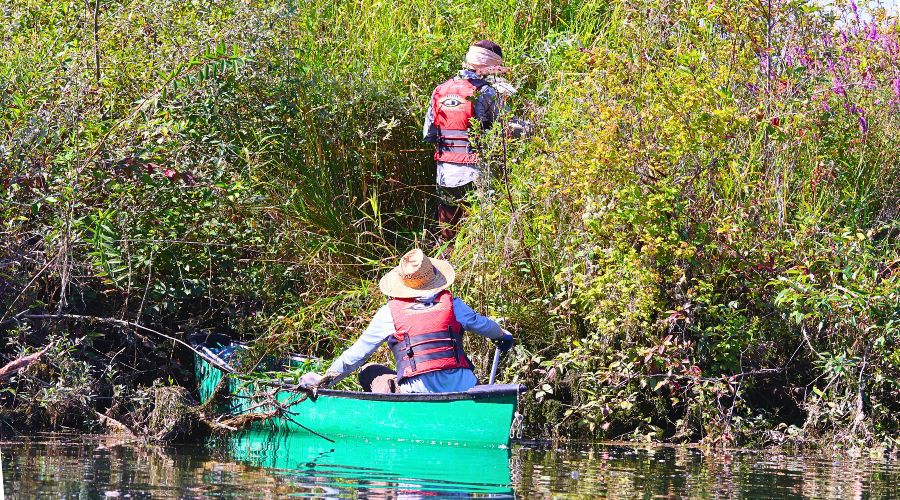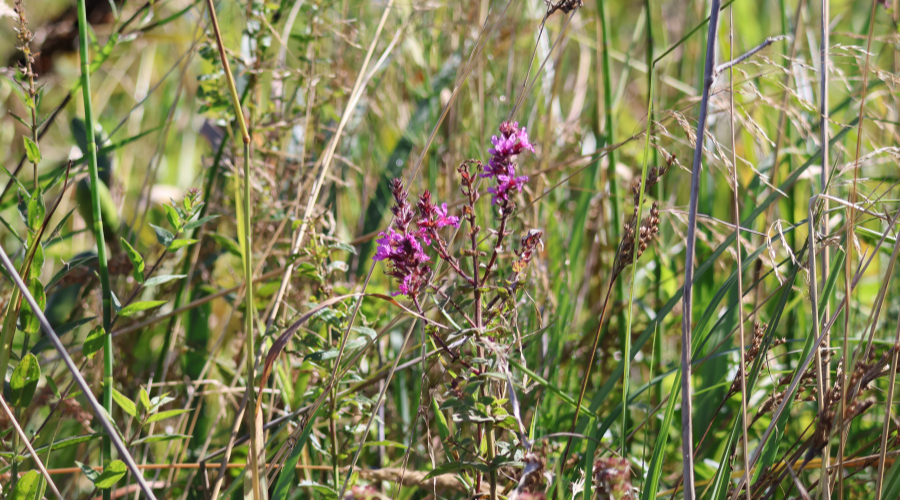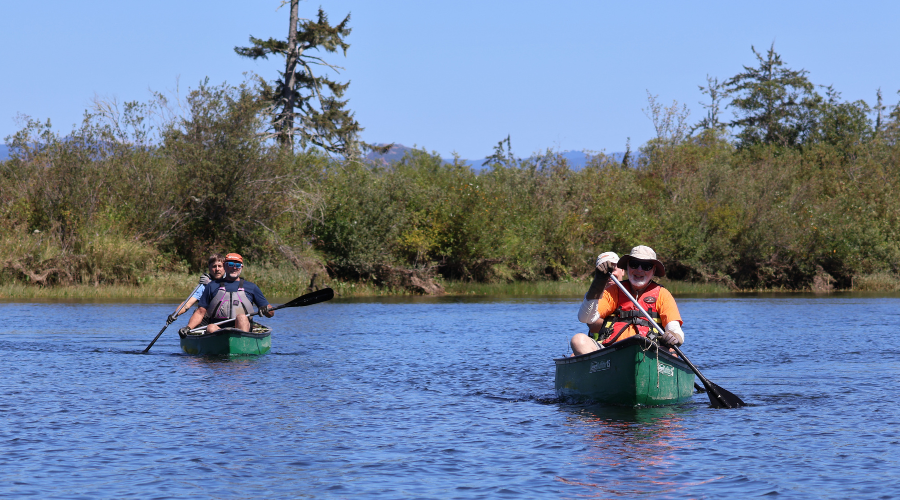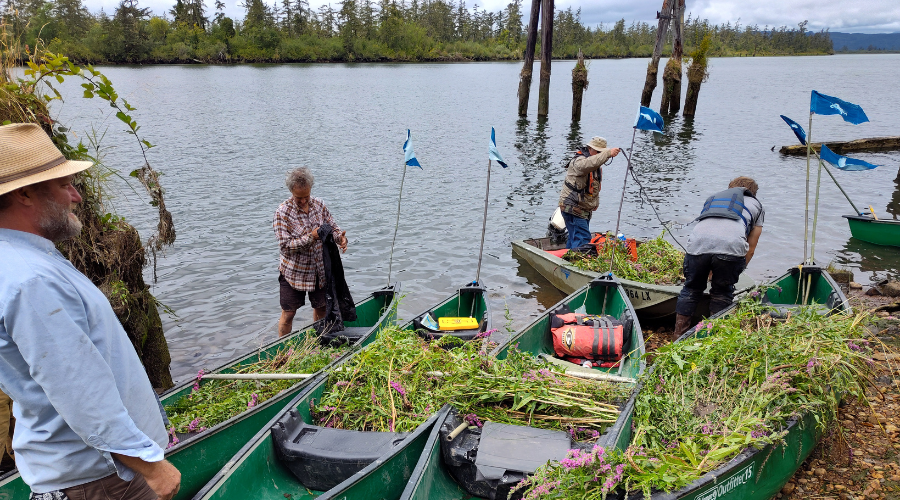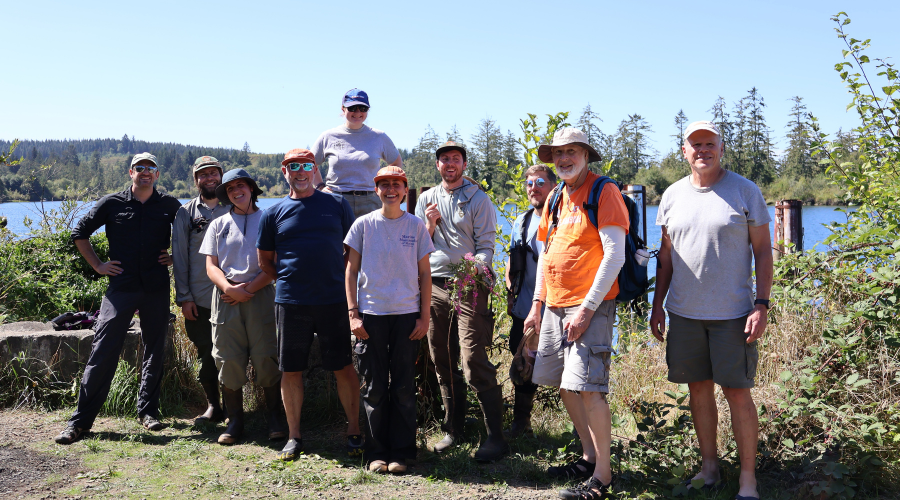Invasive Plant Removal Supports Healthy Habitats and Native Plant Communities
In late summer, our stewardship team often turns attention and effort toward removing purple loosestrife (Lythrum salicaria), a non-native invasive perennial that has spread widely in Oregon. It is an aquatic invader, meaning it likes to grow on the shorelines of wetlands, lakes, and rivers—of which we have plenty in our service area.
In July and August, purple loosestrife was a main focus of our Weed Warrior Wednesdays, and help from a very steadfast and dedicated crew of volunteers enabled us get rid of large piles of the weed at Wolf Bay, John Day River Marsh, and Blind Slough Swamp habitat reserves. Pulling purple loosestrife is also the objective behind our annual two-day work party at Blind Slough, known as Swampathon! We had a great turnout for the event this year, which took place Aug. 10 and 11.
Later that month, we also partnered with a crew from Lewis and Clark National Historical Park to continue the job at Blind Slough, hauling out a truckload of loosestrife. There’s a reason we spend a great deal of time traversing the waterways of this reserve, hunting for purple loosestrife.
“It’s worth it because the habitat is so cool, and it’s a really special habitat,” Eric says. “It’s old-growth Sitka-spruce swamp, one of the rarer habitat types.”
The preserve is dominated by Sitka spruce trees—some more than 400 years old—with younger western redcedar and western hemlock also present, along with some less common Oregon ash and black cottonwood. Dense thickets of coast willow, Sitka willow, twinberry, and Nootka rose line the channels along with abundant sedges, wildflowers, and bulrushes. A few different types of orchids grow in the reserve, along with native mint, corn lilies, and tule. Read More

